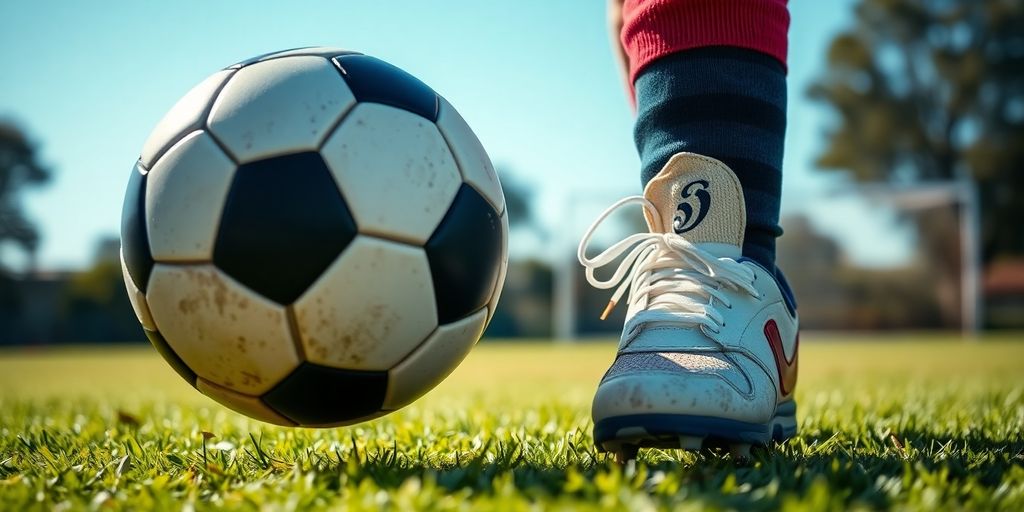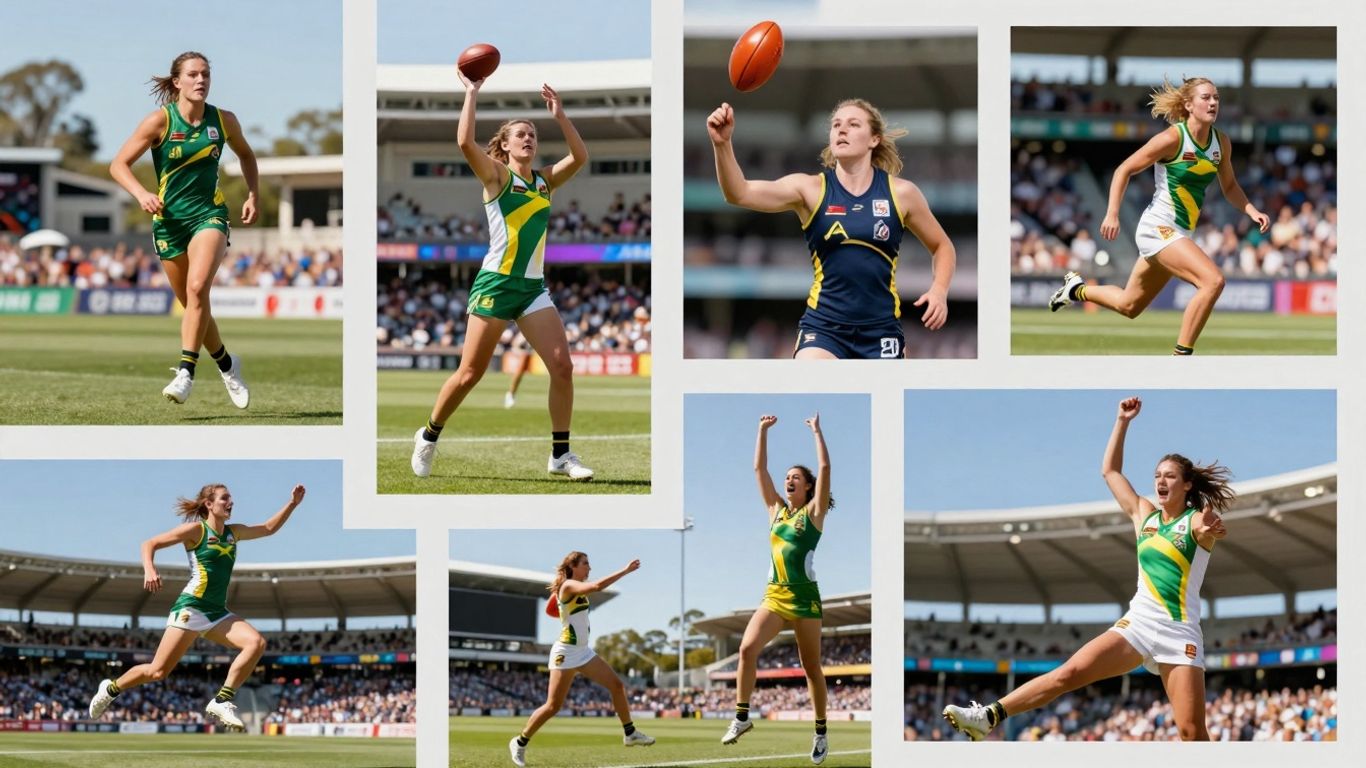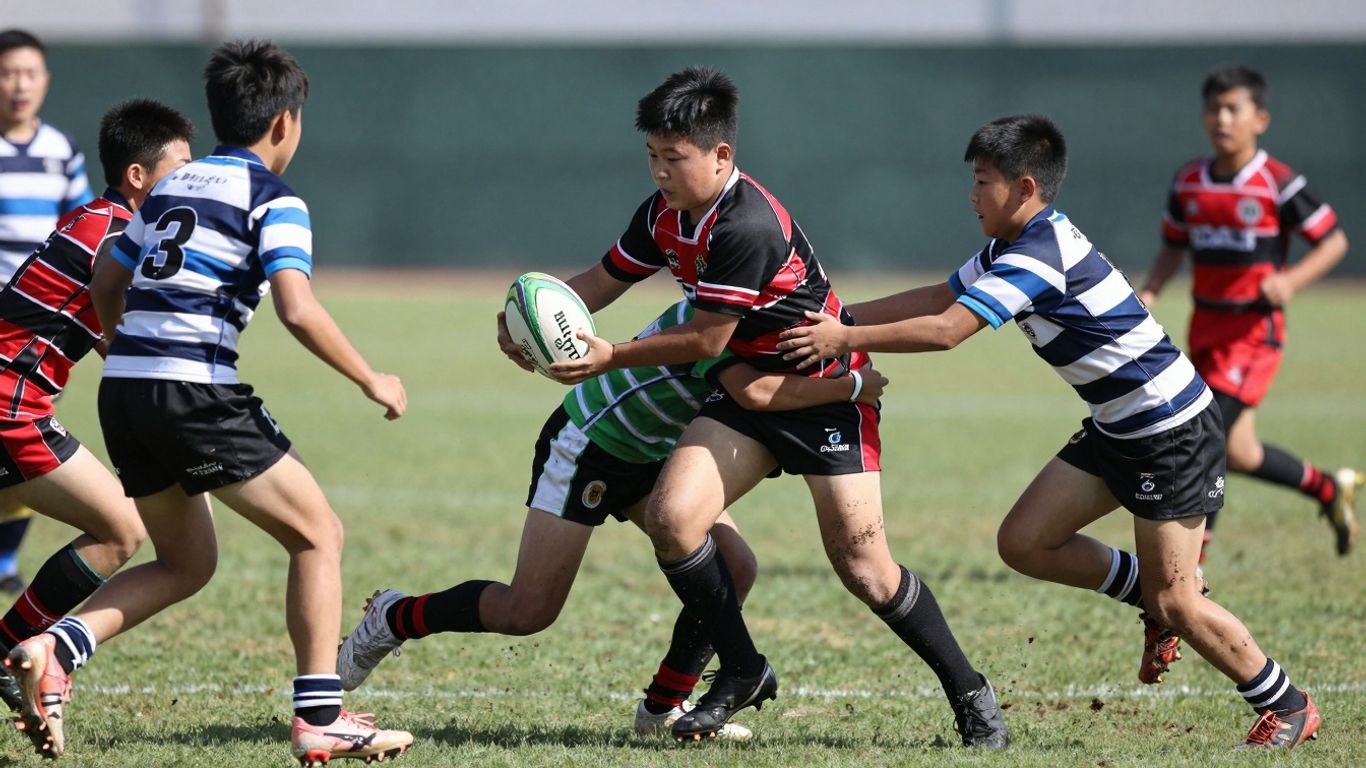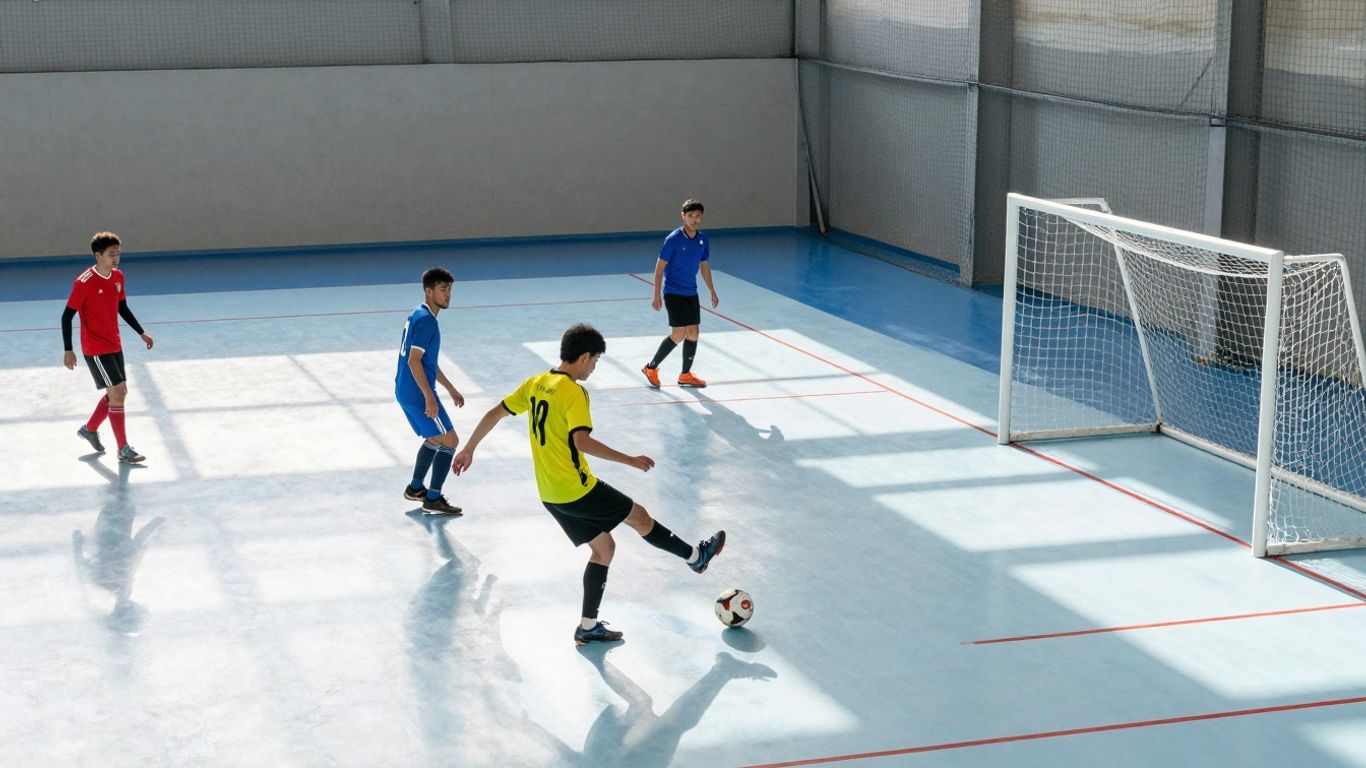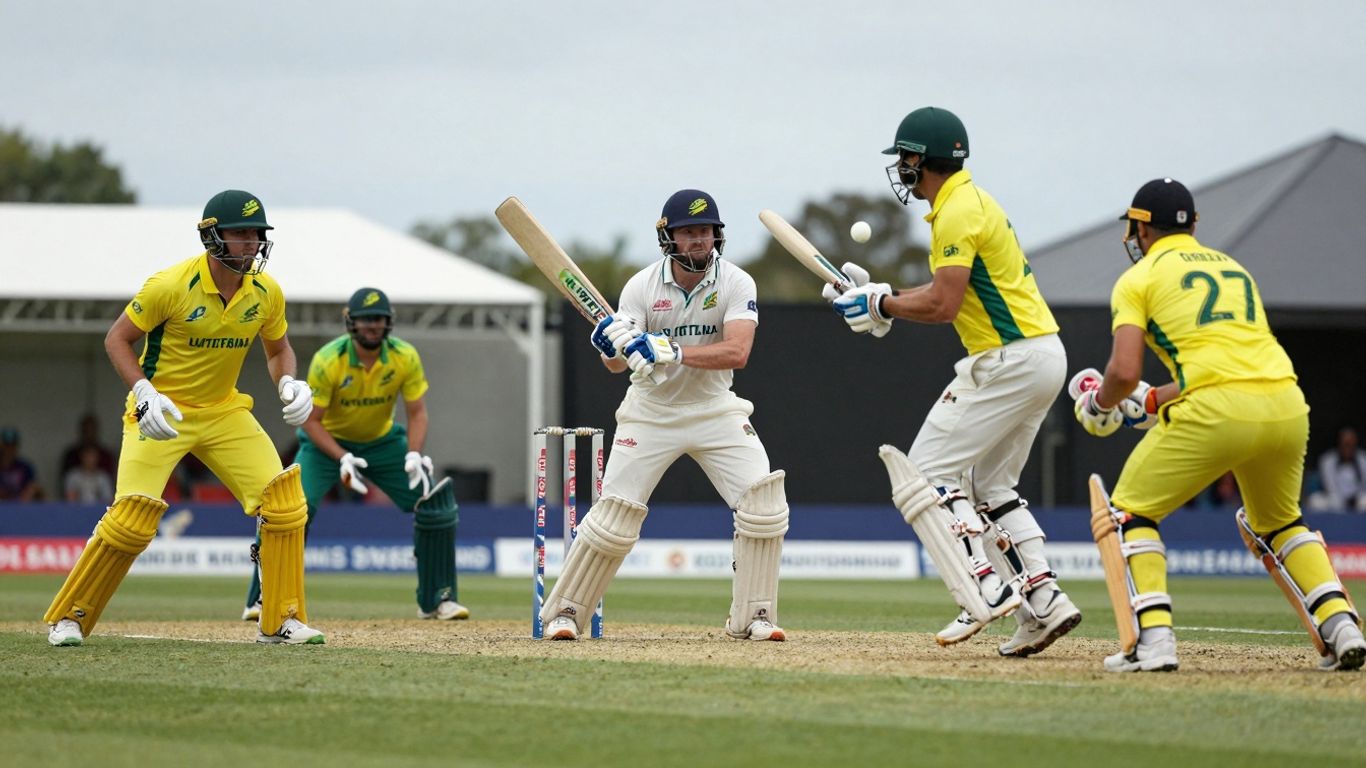Alright, listen up! If you’re keen on soccer, especially for the little legends kicking a ball around down under, then you know picking the right ball is a big deal. It’s not just about grabbing any old sphere; the size really matters. We’re talking about making sure those tiny feet get the best start, building confidence, and just generally having a blast on the field. This guide is all about finding that perfect fit, especially when it comes to soccer ball sizes 3, so everyone can have a fair go and enjoy the beautiful game.
Key Takeaways (Australian)
- Choosing the right soccer ball size helps players control the ball better and hit it where they want it to go.
- Using a ball that fits their age makes kids feel more comfortable and sure of themselves when they play.
- A size 3 soccer ball is spot on for young kids, usually up to about 8 years old, helping them learn the ropes.
- As kids get bigger, they move up to a size 4, and then adults play with the standard size 5 soccer ball.
- The type of ball you need changes whether you’re playing inside (like futsal) or outside on the grass.
Why the Right Ball Makes All the Difference

Choosing the right soccer ball isn’t just about grabbing any old sphere and heading to the park. It’s about setting yourself, or your little tacker, up for success. Think of it like this: using the wrong tool for a job makes the job harder, and often, less enjoyable. Same goes for soccer.
Mastering Control and Accuracy
Using a ball that’s too big or too small can really mess with your ball control. Imagine trying to dribble a basketball when you’re used to a tennis ball – it’s just not going to work. A properly sized ball lets you execute passes, shots, and dribbles with the precision you need to actually improve. It’s about getting the feel right, so you can focus on the game, not wrestling with the equipment.
Boosting Comfort and Confidence
Playing with a ball that suits your age and size is a massive confidence booster. If you’re constantly struggling to control a ball that’s too big, you’re not going to enjoy yourself, and you’re definitely not going to play your best. A comfortable player is a confident player, and a confident player is a better player. It’s as simple as that.
Preventing Unnecessary Injuries
Using the wrong size ball can actually lead to injuries. Kicking a ball that’s too heavy can strain muscles, especially in younger players. Similarly, trying to overcompensate to control a ball that’s too small can lead to awkward movements and potential strains. It’s all about using equipment that’s appropriate for your physical development to minimise the risk.
Think of it like wearing shoes that don’t fit. You might be able to walk in them, but you’re going to be uncomfortable, and you’re more likely to trip or develop blisters. The same principle applies to soccer balls. Using the right size is about protecting yourself and ensuring you can play without unnecessary pain or discomfort.
Unpacking Soccer Ball Sizes for Youngsters
It’s easy to think any old ball will do for the kids, but getting the right size is actually pretty important. It’s not just about them being able to kick it; it’s about their development and enjoyment of the game. Too big, and they’ll struggle. Too small, and they won’t develop proper technique. Let’s break down the sizes that are best suited for our young Socceroos and Matildas in the making.
The Perfect Fit for Little Legends
For the littlest tackers, we’re talking about sizes 1 and 2. These are designed for kids who are just starting to get a feel for the ball. A size 2 soccer ball is ideal for kids aged 3-5 years old, with a circumference of roughly 20-22 inches. They’re lightweight and easy to control, which helps build confidence and coordination. Think of it as their first introduction to the beautiful game. A Size 1 ball is even smaller, perfect for those under 3 who are just learning to kick.
Transitioning to Bigger Kicks
As kids get a bit older and stronger, usually around 5-8 years old, it’s time to move up to a size 3. This is a significant step up from the smaller sizes, but it’s still manageable for their developing bodies. A size 3 ball typically has a circumference of 23-24 inches. It allows them to start developing more power and accuracy in their kicks. It’s all about finding that sweet spot where they’re challenged but not overwhelmed. It’s important to consider the circumference measurements when choosing the right ball.
Nurturing Skill Development
Using the right size ball is more than just about physical comfort; it’s about skill development. A ball that’s too big can hinder their ability to control the ball properly, leading to frustration and poor technique. A ball that’s the right size allows them to develop their dribbling, passing, and shooting skills more effectively. It’s about setting them up for success and fostering a love for the game. Think of it as building a solid foundation for their future soccer careers, even if that just means having a good time with their mates.
Choosing the correct size soccer ball is important for a player’s development. Using the wrong size can be frustrating and even dangerous, especially for those just learning. It’s about finding the right balance between challenge and manageability to ensure they enjoy the game and develop their skills effectively.
Decoding Soccer Ball Sizes by Age Group

It’s easy to get lost in the world of soccer ball sizes, especially when you’re trying to find the right one for your young tackers. Different age groups need different sizes to help them develop their skills and stay safe. Let’s break down the sizes by age so you can make the best choice.
Tiny Tots and Their Size 3 Soccer Ball
Okay, so technically, the littlest legends should start with a size 1 or 2 ball, but heaps of clubs jump straight to a size 3. These are perfect for kids aged 5-8 years old. They’re not too heavy and are easy for little feet to control. A size 3 soccer ball usually measures around 23-24 inches in circumference and weighs about 300-320 grammes. This size helps them build confidence and learn the basics without getting frustrated.
Juniors Stepping Up to Size 4
As your young ‘roos get older and stronger, they’ll need a bigger ball. Size 4 soccer balls are ideal for kids aged 8-12 years old. These balls are a bit bigger and heavier than size 3, helping them develop their kicking power and control. A size 4 ball typically measures around 25-26 inches in circumference and weighs about 350-390 grammes. It’s a good step up as they transition to more advanced skills. Choosing the right soccer pants is also important for comfort and performance.
Adults and the Standard Size 5
For teenagers and adults (12+ years old), the standard size 5 soccer ball is the way to go. This is the size used in professional matches and is designed for players with more developed strength and technique. A size 5 ball measures around 27-28 inches in circumference and weighs about 410-450 grammes. It might seem like a big jump from a size 4, but it’s what they’ll need to compete at higher levels.
Using the right size ball is super important for a few reasons. First, it helps prevent injuries. A ball that’s too big or heavy can strain young muscles. Second, it makes learning easier. Kids can develop better control and technique with a ball that’s the right size for their age and skill level. Finally, it’s just more fun! Playing with the right ball makes the game more enjoyable for everyone.
The Lowdown on Soccer Ball Sizes
Size 3 Soccer Ball: Pros and Cons
Okay, so you’re thinking about a Size 3 soccer ball? These little tackers are perfect for the young’uns, generally between the ages of 5 and 8. The main advantage is that they’re lightweight and easy for small feet to manage. But like anything, there are a few downsides to consider. They might be too light for proper outdoor play if it’s a windy day, and they definitely won’t cut it once your little legend starts getting bigger and stronger. Think of it as training wheels for their feet – great for getting started, but they’ll need to upgrade eventually.
Size 4 Soccer Ball: The Next Step
Right, so your kiddo’s outgrown the Size 3? Time to step up to a Size 4. These are generally for kids aged 8 to 12. It’s a pretty important stage, as they’re developing their skills and getting more serious about the game. A Size 4 soccer ball allows them to develop proper technique without being too heavy or unwieldy.
Here’s a quick rundown:
- Better for developing kicking power.
- More suitable for organised matches.
- Helps with ball control at higher speeds.
Choosing the right size ball is important for development. Too big, and they’ll struggle. Too small, and they won’t be challenged. It’s all about finding that sweet spot where they can learn and grow.
Size 5 Soccer Ball: For the Big Leagues
Alright, now we’re talking! Size 5 is the standard soccer ball for anyone aged 13 and up, including adults and professionals. This is the real deal. If you’re playing in a proper match, this is the size you’ll be using. They are designed for power, accuracy, and durability.
Here’s a quick comparison of the sizes:
| Size | Age Group | Circumference (approx.) | Weight (approx.) |
|---|---|---|---|
| Size 3 | 5-8 years | 23-24 inches | 11-12 ounces |
| Size 4 | 8-12 years | 25-26 inches | 12-13 ounces |
| Size 5 | 13 years and older | 27-28 inches | 14-16 ounces |
So, there you have it. A quick guide to soccer ball sizes. Choose wisely, and happy kicking!
Indoor vs. Outdoor: Picking Your Pitch Perfect Ball
Choosing the right soccer ball isn’t just about grabbing the first one you see. Where you’re playing – indoors or outdoors – makes a massive difference. Think of it like this: you wouldn’t wear your best boots to the beach, would ya? Same principle applies here. The ball needs to suit the surface to give you the best performance.
Futsal Fun with Smaller Balls
Futsal, or indoor soccer, is a fast-paced game played on a hard court. Because of this, you need a ball that won’t bounce all over the place. Futsal balls are smaller and heavier than your standard outdoor soccer balls. This helps keep the ball grounded, giving you more control in those tight indoor spaces. They usually range from size 3 to size 4. The reduced bounce is key for quick passing and close control.
Outdoor Adventures with Standard Sizes
Outdoor soccer is a different beast altogether. You’re usually playing on grass, which means you need a ball that can handle the bounce and roll. Size 5 balls are the standard for outdoor play, especially for older players (13+). These balls are designed to perform well on grass, giving you the right amount of bounce and flight. Plus, they’re built to withstand the wear and tear of outdoor surfaces. For younger players, size 4 is often used to help them develop their skills without being overwhelmed by a larger ball.
Considering Your Playing Surface
It’s not just about indoor versus outdoor; think about the specific surface you’re playing on. Is it a perfectly manicured grass pitch, or a rough, uneven field? A higher quality ball will generally perform better on any surface, but it’s still worth considering. For example, if you’re playing on artificial turf, you might want a ball with a slightly different texture to grip the surface better. Ultimately, the goal is to find a ball that feels good in your hands (or feet!) and allows you to play your best game. Here’s a quick guide:
- Grass: Standard size 5 outdoor ball.
- Artificial Turf: Size 5 outdoor ball, consider a textured surface.
- Futsal Court: Size 4 futsal ball.
- Gymnasium: Size 3 or 4 futsal ball.
Choosing the right ball can really impact your game. A ball that’s too bouncy indoors will be frustrating, and a futsal ball on a grass pitch just won’t fly right. Take a moment to think about where you’ll be playing most often, and choose accordingly. It’ll make a world of difference to your enjoyment and performance.
Choosing the Best Soccer Ball Sizes 3 for Your Little Champ
The Ideal Size for Budding Socceroos
So, your little tacker is keen on kicking a ball around? That’s bonza! But before you rush out and grab any old sphere, let’s yarn about getting the right size. For the young ‘uns, especially those just starting out, a size 3 soccer ball is the go. They’re smaller and lighter, making them easier for little legs to manage. Think of it like this: you wouldn’t give a toddler a cricket bat, would ya? Same principle applies here.
Building Confidence with the Right Ball
It’s all about building confidence, mate. A size 3 ball allows kids to actually control the thing, dribble without tripping over, and get some decent shots away. If they’re struggling with a ball that’s too big, they’ll just get frustrated and might lose interest altogether. We want to avoid that, right? We want them out there having a ripper time, not feeling like they’re wrestling a small planet.
Choosing the right size isn’t just about physical ability; it’s about psychological comfort too. A smaller ball feels less intimidating, encouraging kids to be more adventurous and try new things. It’s about setting them up for success from the get-go.
Ensuring Enjoyment on the Field
Ultimately, it’s about enjoyment. If your little one is having a blast, they’re more likely to stick with it and develop their skills. A size 3 ball is a great starting point for kids under 8, giving them the best chance to fall in love with the beautiful game. Plus, it helps them develop proper technique early on, which is a massive advantage down the track. Think of it as laying the foundation for a future Socceroo or Matilda!
Here’s a quick rundown:
- Easier to control and kick for little legs.
- Builds confidence and encourages skill development.
- Makes the game more enjoyable and less frustrating.
- Helps develop proper technique from a young age.
Wrapping It Up
So, there you have it. Picking the right soccer ball size really does make a difference, no matter if you’re just starting out or you’ve been playing for ages. It’s all about getting a ball that fits your age and how you play. Don’t forget to check out the rules from places like FIFA and US Youth Soccer to make sure you’re using the right size for games and practise. Also, think about the field, your playing style, and what just feels good to you when you’re choosing a ball. We’ve got heaps of soccer balls here at u90soccer.com, so you can definitely find one that’s perfect for you. Happy kicking!
Frequently Asked Questions
What stuff helps you pick the right soccer ball size?
Picking the right soccer ball size depends on a few things: how old the player is, their skill level, and what the local league rules say. It’s super important to get a ball that’s the right size for their age group. This helps them control the ball better and learn skills properly. The right ball can really make a difference in how much fun they have and how quickly they improve.
How many soccer ball sizes are there?
There are usually five main sizes of soccer balls, from size 1 all the way up to size 5. Each size has its own use. For example, size 1 balls are often for practising skills or as cool souvenirs. Size 5 balls are what adults use in proper games. Sizes 3 and 4 are made for younger players, so the ball is just right for their body size and strength, helping them get better at the game.
What’s the normal size for adult soccer?
For adults, the standard soccer ball size is a 5. This ball is used in professional matches and by players aged 13 and up. It’s bigger and heavier, which is perfect for more advanced play and practise.
What size soccer ball is best for young kids?
For the little champs aged 8 and under, a size 3 soccer ball is spot on. These smaller balls are easier to handle and kick, making them perfect for beginners. They’re also lighter, which builds confidence as kids learn and play.
When should a kid move up to a bigger soccer ball?
When kids get a bit older and their skills grow, they can move up to a size 4 ball, usually for ages 8-12. This ball is a bit bigger and heavier than a size 3. It gives them a bit more of a challenge but is still easy enough for them to manage as they keep learning.
Is there a difference between indoor and outdoor soccer balls?
For indoor soccer, like futsal, you usually use a slightly smaller and heavier ball than for outdoor games. This is because indoor surfaces are often hard, like a gym floor, and the smaller ball gives you better control and accuracy. Outdoor games use the standard sizes. So, think about where you’ll be playing most of your games when you’re choosing your ball.

